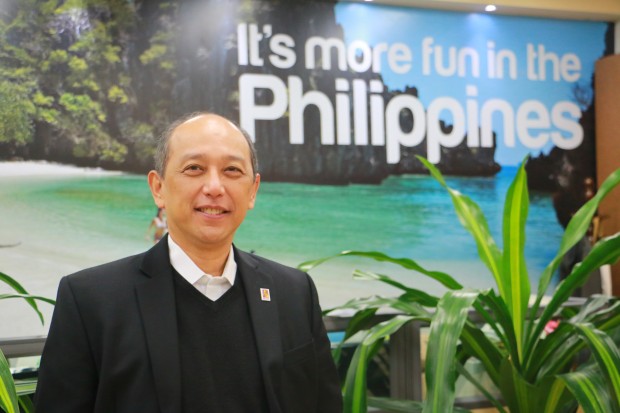It must definitely be more Fun in the Philippines
Korea has an abundance of embassies, representing more than 100 countries in the world. Living in Korea, I have observed a large number of travelers looking for experiences come to Korea, an interestingly unique cultural hub that it is, while many Koreans go out to experience other countries, be it for culture or vacation or any kind of experiences. Neighboring or relatively closer countries like Philippines, Japan and China are most often frequented by businessmen and travelers of all kinds.
Last week, I had an opportunity to meet Mr. Domingo Ramon C. Enerio III, President of Tourism Promotions Board (TPB) Philippines, and discuss with him the growing popularity of Philippines as a travel destination among Koreans and foreigners living in Korea, alike.
Philippines has a rich culture – a fusion of so many different cultural influences – that it promotes to the world, attracting a large quantity of people to its tourism destinations as well as distinct cultural experiences. Mr. Domingo says, “Philippines has so much culture to be proud of and so much culture to share with people…. More than any other time, we are able to express our culture more vividly now, in terms of our cuisine, festivals and our values and faith.”
And that is the USP. Koreans are especially interested in visiting Philippines as “there is a similarity in our (Filipino) values because a huge percentage of Koreans practice the Christian faith and we have a big Catholic base in Philippines. So there’s an opportunity for us to showcase our ancient churches, traditions and religious beliefs.”
Philippines tourism campaign ‘It’s More Fun in the Philippines’ has been quite successful in increasing the number of visitors from Korea. Mr. Domingo says the current number stands at 1.3 million and their goal is to reach 2 million visitors in the next year.
Asked about the Filipino food, Mr. Domingo chimes in, “It’s a mixture of different influences. We call ourselves the ‘melting pot’ of Asia because we have influences which come from Asia and we have European influences because of the Spanish colonization, as well as American influence. All of these influences have merged to come up with a distinct Filipino taste.”
Festivals are a huge part of culture in the Philippines and provide a chance to have a good time, get together with family and friends and celebrate, thus giving travelers a great many opportunities to explore the depths of this rich culture.
“There are as many festivals in the Philippines as there are days in a calendar. Almost every day, there is a festival happening. Some festivals are more popular than others. The Sinulog Festival in Cebu now attracts over 2 million visitors every year,” says Mr. Domingo.
The Sinulog Festival is an annual cultural and religious festival held on the third Sunday of January in Cebu City, and is the center of the Santo Niño celebration in the Philippines. As Mr. Domingo describes, “It is a street dancing festival, which has its roots in religion, telling stories about a miraculous statuette of the Santonino, the holy child which performs miracles in Cebu and thus, giving birth to this annual event. Now it has become more than a religious festival. It has become part of the culture, people dancing, drinking and partying everywhere.”
The Sinulog Festival is only one of the dozens of festivals, some of the most popular of which includes MassKara Festival, Ati-Atihan Festival.
Mr. Domingo exclaims, “We are the Latinos of Asia. Every time we have a festival, we don’t call it a festival we say it is a fiesta.”
In Mr. Domingo’s voice, I could see a confidence of achieving the tourism board’s goal quite soon. As the Philippines continues to invigorate the world’s imagination and fascinate people with their culture, more and more tourists, especially from within Southeast Asia, will keep frequenting the country. With a number of strategies, campaigns and collaborations to attract Koreans, the 2 million goal does not seem quite far away. As the ‘melting pot’ of Asia rides toward its goal, I can’t help but imagine that it must definitely be more fun in the Philippines.






















































